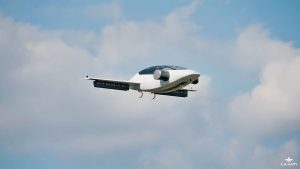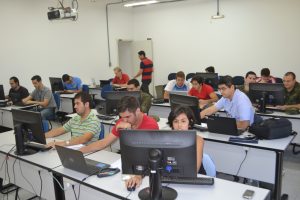General Description of our course on MAV
Scope
The MP282 course provides an introductory research background for students with an interest in the guidance and control of multirotor aerial vehicles (which I usually abbreviate by MAV). I don’t focus on a specific rotor set configuration; I try to be general in gathering every aerial vehicle controlled by rotating wings into the same framework.

Applications
The MAV concept appears in both drones (which are unmanned aerial vehicles) and eVTOL aircraft (mainly developed for air taxi operations). The eVTOL vehicles usually adopt the so-called “Distributed Electric Propulsion” (DEP) concept. For this reason, they require a non-trivial control allocation method. The hierarchical control architecture on which this course relies is very appropriate to deal with such DEP-based aircraft.

A Graduate Course
MP282 is usually offered to the ITA’s Graduate Program on Aeronautical and Mechanical Engineering.

Methodology
The course is organized in 8 + 8 weeks, with weekly classes of 3 hours, adding up to 48 face-to-face hours. In the classroom, the methodology is based on lectures, discussions, and simulation exercises in MATLAB.
For more details about the course structure and methodology, see the syllabus.
Sequence of Topics
Introduction
It illustrates the overall hierarchical structure of the flight control architecture typically used in MAV. The illustration is on a hypothetical MAV containing only two rotors and three degrees of freedom – Slides.
External Forces and Torques
This chapter presents the relevant external efforts found in different kinds of MAV. It includes the tethered MAV as well as the hybrid airships (such as the one analyzed here) – Slides.
Resulting Control Efforts
On the other hand, this chapter computes the resulting control efforts for different rotor configurations as a function of the individual thrust intensity and orientation – Slides.
Equations of Motion
Here, the text presents the equations of the attitude dynamics and kinematics considering different parameterizations of SO(3) – Slides.
Translational Motion, Lagrange, and Summary
To complement the previous chapters, this text models the translational motion of MAV using Newton’s Law. Moreover, it presents the Euler-Lagrange approach to derive the translational and rotational dynamic equations and finishes with a summary of MAV modeling – Slides.
Flight Control
This chapter presents a hierarchical control architecture for attitude and position control of fixed-rotor MAVs. Assuming a time-scale separation between the translational and rotational dynamics, the attitude and position control laws are separately designed. In particular, each design uses feedback linearization and proportional-derivative control actions – Slides.
Control Allocation
It deals with the distribution of the resulting control efforts, produced by the flight control laws, among the available actuators (rotors and servomotors) – Slides.
Sliding Mode Control
It presents an alternative design for the attitude and position control laws, thus complementing the “Flight Control” topic. The sliding mode control is very suitable for dealing with nonlinearities, model uncertainty, and disturbances – Slides.
Guidance
It shows how to deal with the guidance problem using optimization. The guidance module is put above the flight control laws in the adopted hierarchical scheme. Therefore, in general, it generates a time-dependent position and heading commands from the desired waypoint or final destination – Slides.
Path Planning
It generates a sequence of waypoints from the starting pose to the desired destination that avoids obstacles and optimizes some criteria. The waypoints generated in such a way are the inputs to the guidance module – Slides.
Besides this course, I am currently offering at ITA two more subjects, one on linear control systems and the other one on optimal filtering with aerospace applications (for example, navigation, attitude determination, and tracking). You can find more information about these courses at the following links:
MP208: Optimal Filtering with Aerospace Applications
Do you like this course? If you want to know more about it, send me an e-mail. It will be a pleasure for me to share and exchange knowledge on this subject!
